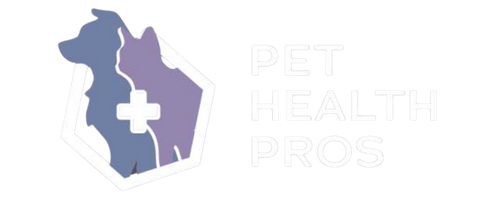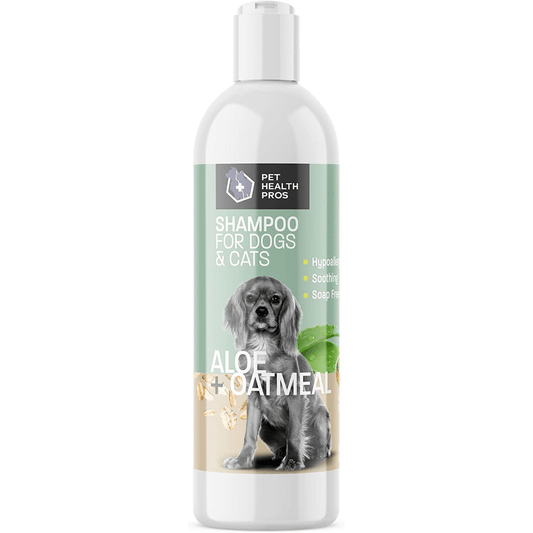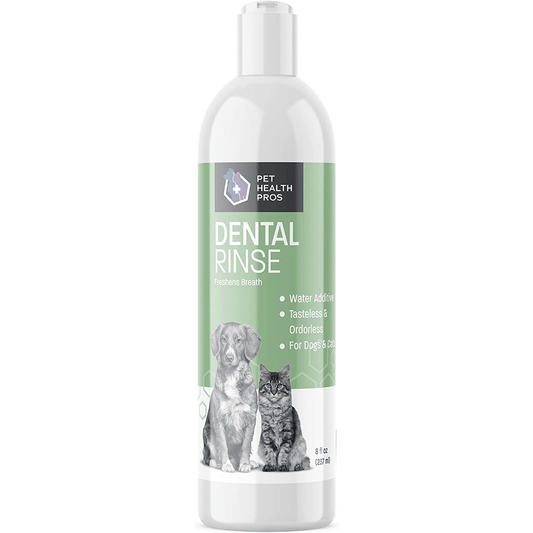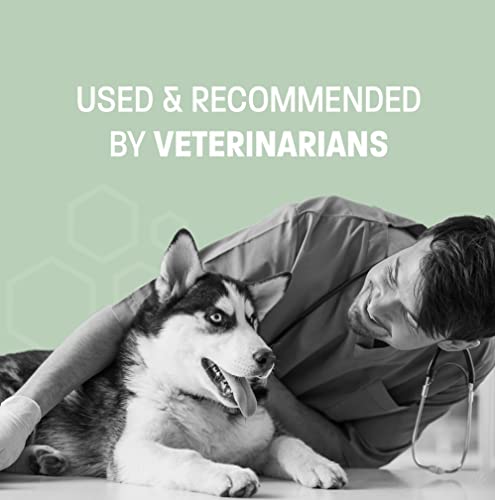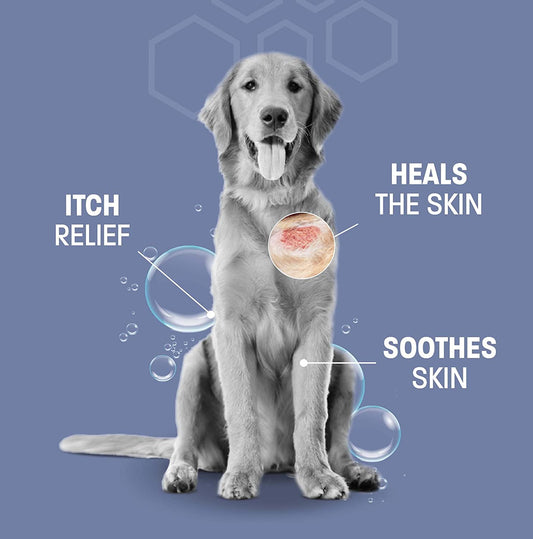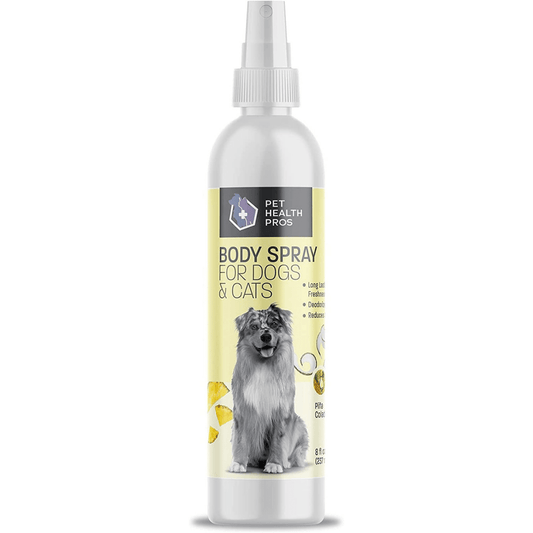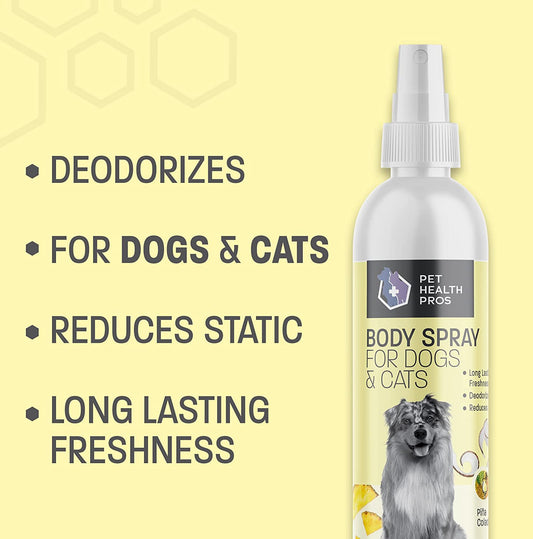When a dental emergency strikes your furry companion, knowing the right steps to take can mean the difference between quick recovery and long-term issues. This article, brought to you by Pet Health Pros, a trusted name in pet health supplies, provides a comprehensive guide on how to handle a dog dental emergency. With over fifty years of veterinary expertise, Pet Health Pros offers products and knowledge designed to ensure the health and happiness of your pets. Here are the immediate steps and considerations to keep in mind when your dog faces a dental crisis.
Key Takeaways
- Quickly identifying a dental emergency in dogs, such as broken teeth or bleeding gums, is crucial for prompt and effective treatment.
- Provide immediate comfort to your dog and prevent further injury while assessing the situation and deciding if veterinary care is needed.
- Administer safe first aid, including pain management and temporary solutions, to alleviate discomfort before professional care is available.
- Understand what to expect at the vet's office, including possible treatments and the importance of expert care in managing dental emergencies.
- Implement routine dental care and preventive measures to maintain your dog's long-term dental health and avoid future emergencies.
Recognizing a Dental Emergency in Dogs
Identifying Common Dental Injuries
Dental emergencies in dogs can range from minor to severe and identifying them is crucial for timely and effective treatment. Broken teeth are a common injury, often resulting from trauma or chewing on hard objects. Another frequent issue is tooth avulsion, where a tooth becomes completely dislodged. Less visible but equally concerning are injuries to the gums or inner cheeks, which can lead to infections if untreated.
Tooth fractures can vary in severity, with some exposing the sensitive inner pulp and others only affecting the enamel. It's important to note that even minor injuries can escalate if bacteria enter the tooth, leading to abscesses or systemic infections. Recognizing these injuries early can prevent more serious health problems and ensure your dog's well-being.
- Broken teeth
- Tooth avulsion
- Gum injuries
- Inner cheek trauma
- Tooth fractures
Early detection and treatment of dental injuries are essential in maintaining your dog's oral health and overall comfort.
Symptoms That Signal Immediate Attention
In the event of a dog dental emergency, certain symptoms require immediate attention to prevent further harm and ensure the well-being of your pet. Excessive drooling, blood in the saliva, or a sudden refusal to eat are clear indicators that your dog is in distress and may be experiencing significant oral pain or injury.
Other critical signs include:
- Visible broken teeth or tooth fragments
- Swelling around the mouth or face
- Pawing at the mouth or face
- Difficulty opening or closing the mouth
If you observe any of these symptoms, it's crucial to act swiftly. > While Pet Genius provides personalized care for pets, in an emergency, your first call should be to your veterinarian. They can offer immediate advice and determine if your dog needs to be seen right away. Remember, prompt and appropriate action can make a significant difference in your dog's recovery and comfort.
Understanding the Urgency of Dental Trauma
Dental trauma in dogs can escalate quickly, leading to severe pain, infection, and even systemic health issues if not addressed promptly. Immediate action is crucial to prevent long-term complications and ensure the well-being of your pet. Dental emergencies can range from broken teeth to periodontal disease, each requiring a different level of care.
When faced with a dental emergency, it's important to assess the severity of the injury. If your dog is experiencing excessive bleeding, swelling, or appears to be in significant pain, these are clear signs that professional veterinary care is needed without delay. A quick response can mean the difference between a simple treatment and more invasive procedures.
In the event of a dental emergency, your primary goals are to stabilize your dog's condition and seek veterinary assistance. Guide on administering first aid to dogs includes staying calm, assessing severity, and stopping bleeding. While minor injuries may be treatable at home, serious injuries require a vet visit.
Remember, your dog relies on you to take the lead during an emergency. By understanding the urgency of dental trauma and knowing the steps to take, you can help ensure a positive outcome for your furry friend.
Initial Steps to Take During a Dental Emergency
Assessing Your Dog's Condition
In the event of a dental emergency, it is vital to quickly assess your dog's condition. Start by calmly approaching your pet and speaking in a soothing tone to avoid additional stress. Gently examine your dog's mouth for any obvious signs of injury, such as broken teeth, bleeding, or foreign objects. If your dog is in pain, they may resist, so proceed with caution to prevent being bitten.
Pain is a clear indicator of a dental emergency. If your dog is pawing at their mouth, has difficulty eating, or shows any change in behavior, it's important to take these signs seriously. Here's a simple checklist to help you determine the severity of the situation:
- Presence of blood or unusual discharge
- Missing or loose teeth
- Swelling in or around the mouth
- Reluctance to eat or drink
While you may be able to provide some immediate relief, remember that professional veterinary care is essential for proper diagnosis and treatment. Do not attempt to treat serious dental injuries at home.
After your initial assessment, keep your dog comfortable and avoid any activities that could exacerbate the injury. If the situation seems severe, do not hesitate to contact your veterinarian immediately for further instructions.
Providing Comfort and Preventing Further Injury
In the event of a dental emergency, your primary goal is to keep your dog calm and comfortable. Gently approach your pet, speaking in a soothing tone to reduce their anxiety. If your dog allows, carefully inspect the mouth for visible signs of injury, but avoid causing further pain or distress.
Pain management is crucial. If your dog is in pain and you have canine-specific pain relief prescribed by your vet, administer it according to the instructions. Do not give human medications as they can be toxic to dogs.
Ensure your dog's environment is safe and quiet to prevent additional stress or injury. Remove any hazards that could cause further harm, and provide a comfortable resting area.
If your dog has a broken tooth, avoid offering hard food or chew toys that could exacerbate the injury. Instead, provide soft food and discourage chewing until you can see a veterinarian. Keep a close eye on your dog's behavior and comfort level, and prepare to transport them to the vet if necessary.
When to Contact Your Veterinarian
In the event of a dog dental emergency, it's crucial to know when professional veterinary assistance is necessary. Contact your veterinarian immediately if your dog exhibits any of the following: excessive bleeding, broken or loose teeth, severe pain, or if your dog has had a traumatic injury to the mouth. Here's a quick guide on when to make that critical call:
- Excessive bleeding that doesn't stop after a few minutes of applying pressure
- Broken or loose teeth, especially if they are causing pain or difficulty eating
- Signs of severe pain such as whining, shaking, or reluctance to allow mouth examination
- Any traumatic injury to the mouth, such as puncture wounds or lacerations
Prompt action can prevent further complications and ensure the best possible outcome for your dog's dental health. If you are unsure whether the situation is an emergency, it's always better to err on the side of caution and consult with your veterinarian.
In cases where immediate veterinary care is not available, apply gentle pressure to control bleeding and offer a soft diet to avoid further injury. Keep your dog calm and avoid any unnecessary stress until professional help can be reached.
Administering First Aid for Dog Dental Emergencies
Safe Handling and Pain Management
During a dental emergency, it's crucial to handle your dog with care to avoid exacerbating the injury. Gently support your dog's head and jaw when inspecting the mouth, and be mindful of their discomfort. Pain management is a delicate balance; while over-the-counter pain medications for humans can be toxic to dogs, there are safe options you can use with a veterinarian's guidance.
Pain relief for dogs often involves prescribed medications that are specifically formulated for their physiology. If you're unsure about the correct approach, it's always best to consult with your vet before administering any treatment. Here's a simple list to follow when managing your dog's pain:
- Assess the level of pain and look for signs of distress.
- Contact your veterinarian for advice on pain relief.
- Follow the vet's instructions on medication dosage and administration.
- Monitor your dog's behavior and comfort levels after administering pain relief.
In the interim, providing a quiet and comfortable space for your dog can help reduce stress and aid in recovery. Avoid offering food or water until you've consulted with a professional, as this could cause further harm.
Promoting oral health is an ongoing process. Dental water additives can be a convenient solution for pet owners to maintain their dog's oral hygiene. These additives are designed to be added to your dog's drinking water and can help in preventing plaque buildup, ensuring fresher breath, and supporting overall dental health.
Temporary Solutions for Broken Teeth
When your dog suffers a broken tooth, it's crucial to manage the situation until you can get professional veterinary help. Keep your dog calm and avoid touching the broken tooth to prevent pain and further damage. If the tooth is bleeding, gently apply a clean cloth to help control the bleeding.
- Rinse your dog's mouth with clean water to remove any debris.
- Offer soft food that won't irritate the broken tooth.
- Use a temporary dental sealant, if available, to protect the exposed area.
It's important to note that these are temporary measures. A broken tooth can lead to infection and more serious health issues if not properly treated by a veterinarian.
Always contact your veterinarian for guidance on how to handle the situation and to schedule an appointment for proper care. The use of temporary dental sealants can provide short-term protection but is not a substitute for professional treatment.
Dealing with Bleeding and Swelling
When your dog experiences a dental emergency that involves bleeding or swelling, immediate and appropriate action is crucial. Apply gentle pressure to the bleeding area using a clean cloth or gauze. If swelling is present, a cold compress can be applied to the affected area to reduce inflammation.
Swelling should be closely monitored as it may indicate a more serious underlying issue. If the swelling does not subside or if bleeding continues despite your efforts, seek veterinary assistance promptly.
In cases of severe bleeding or swelling, it is imperative to keep your dog calm and limit their movement to prevent further injury or stress.
Here are some steps to follow:
- Apply gentle pressure to control bleeding.
- Use a cold compress to manage swelling.
- Monitor your dog's condition closely.
- Contact your veterinarian if there is no improvement or if the situation worsens.
Professional Veterinary Care for Dental Emergencies
What to Expect at the Vet's Office
Upon arriving at the vet's office, your dog will be promptly assessed to determine the severity of the dental emergency. Expect a thorough oral examination to check for any broken teeth, bleeding, or signs of infection. The vet may also require dental X-rays to get a clearer picture of the damage beneath the gum line.
The veterinary team will prioritize pain management and may administer analgesics or other medications to alleviate your dog's discomfort. If the situation is critical, they might perform emergency procedures on the spot.
Your dog's comfort and stabilization are the immediate goals, followed by a detailed plan for treatment or surgery if necessary.
After the initial emergency care, the vet will discuss with you the next steps, which may include further treatment, medication, or surgery. They will also provide guidance on home care and any necessary follow-up appointments.
Possible Treatments and Procedures
Once at the veterinarian's office, a range of treatments and procedures may be considered depending on the severity and nature of your dog's dental emergency. Immediate pain relief will be a priority, often administered through safe, dog-specific analgesics. For cases involving broken teeth, the vet may perform a restorative procedure such as capping or extraction, depending on whether the tooth can be saved.
In the event of severe dental trauma, surgery might be necessary to address jaw fractures or extensive tissue damage. Here's a brief overview of potential treatments:
- Pain management with analgesics
- Antibiotic therapy to prevent or treat infection
- Dental X-rays to assess the extent of injury
- Tooth repair or extraction
- Surgery for severe cases
It's essential to follow the vet's post-procedure care instructions to ensure proper healing and prevent complications. These may include a soft diet, limited activity, or administering prescribed medications at home.
The success of these treatments relies heavily on timely intervention and the expertise of veterinary professionals. Ensuring your pet receives the best possible care will contribute to their overall well-being and prevent future dental issues.
The Role of Expertise in Emergency Care
In the face of a dental emergency, the expertise of your veterinarian is paramount. Veterinarians are equipped with the knowledge and tools necessary to diagnose and treat dental injuries effectively. They understand the complexities of canine dental anatomy and the potential complications that can arise from dental trauma.
Expertise in emergency care is not just about immediate treatment; it's about foreseeing long-term consequences and preventing further issues. A vet's experience can be the difference between a simple procedure and a more complex one, should the injury be left unaddressed or improperly treated.
- Assess the severity of the injury
- Determine the appropriate treatment plan
- Provide pain management
- Prevent potential complications
In emergency situations, timely and professional veterinary care is crucial. It ensures that your dog receives the best possible outcome for their dental health and overall well-being.
Preventive Measures and Long-Term Dental Health
Routine Dental Care for Dogs
Maintaining dental health in dogs is not just about fresh breath; it's about preventing future health complications. Introduce toothbrushing early to your dog's routine using a soft-bristled brush and dog-specific toothpaste. Regular brushing can significantly reduce the buildup of plaque and tartar, leading to a healthier mouth and body.
Chew toys are not just for entertainment; they play a crucial role in dental care. Select toys that are designed to strengthen teeth and gums while providing a safe outlet for your dog's natural chewing instincts. Always supervise your dog with new toys to ensure they are appropriate and safe.
In addition to daily dental care, regular veterinary check-ups are essential. Your vet can spot early signs of dental issues and provide professional cleanings, which are vital for maintaining your dog's oral health. Remember, neglecting dental hygiene can lead to serious health issues, including heart and kidney problems.
While home care is important, professional veterinary care should not be overlooked. Incorporate parasite prevention and regular health check-ups for your dog's overall well-being.
Choosing the Right Dental Health Products
Selecting the appropriate dental health products for your dog is crucial for preventing oral diseases and ensuring long-term dental health. Senior dogs require proper dental care to prevent gum disease, tooth decay, and other health issues. Regular brushing, checkups, and a good diet are essential for maintaining their oral health.
When choosing products, consider those that are specifically designed for dogs, such as toothbrushes with soft bristles and toothpaste formulated for canine use. Avoid human toothpaste as it can be harmful to your pet. Look for products with a seal of approval from veterinary associations, which indicates that they have been tested and proven effective.
It's important to select dental health products that cater to the specific needs of your dog, taking into account their age, breed, and any existing dental conditions.
Additionally, consider the brand's reputation and the quality of their products. Brands like Pet Health Pros, known for their expertise-driven formulations and collaboration with veterinarians, offer a range of dental health supplies backed by a satisfaction guarantee. This reassurance is vital when investing in your dog's dental care.
Educational Resources for Pet Owners
In the digital age, pet owners have access to a wealth of information to help them ensure the long-term dental health of their dogs. Pet Health Pros is a U.S.-based company that stands out for its commitment to providing educational content that is both accessible and reliable. With over fifty years of combined experience in veterinary medicine, the team behind Pet Health Pros offers a range of resources designed to educate and empower pet owners.
Educational content is a cornerstone of Pet Health Pros' approach to pet care. Their online presence includes blog posts, articles, and guides that cover a variety of topics related to dog dental health. These resources are crafted in collaboration with veterinarians and are made available through various customer touchpoints:
- Online Store: The primary point of purchase, featuring educational material alongside health products.
- Amazon Storefront: A convenient platform for accessing a wide array of pet health supplies and educational resources.
- Customer Service: Personalized support that can provide additional information and answer specific questions.
- Community Engagement: An active social media presence that offers tips, updates, and connects pet owners with a community of like-minded individuals.
By utilizing these resources, pet owners can gain a deeper understanding of dental emergencies and learn how to prevent them. This proactive approach to education can lead to healthier pets and, ultimately, happier lives.
Maintaining your pet's dental health is crucial for their overall well-being. Regular dental care can prevent common issues such as tartar buildup, gum disease, and bad breath. To support your furry friend's long-term dental health, visit our website and explore our range of dental care products. From water additives to dental wipes, we have everything you need to keep your pet's smile bright and healthy. Don't wait until it's too late; take a proactive step towards your pet's dental care today!
Conclusion
In conclusion, handling a dog dental emergency requires prompt and informed action to ensure the well-being of your furry friend. Remember to stay calm, assess the situation, and provide immediate care while seeking professional veterinary assistance. As a pet owner, it's essential to have the right supplies on hand, and Pet Health Pros is committed to offering superior, affordable pet health supplies that cater to the evolving needs of pets and their owners. With over fifty years of experience in veterinary medicine and a dedication to quality and customer satisfaction, you can trust Pet Health Pros for all your pet health needs. Keep in mind that prevention is key, so regular dental check-ups and proper oral hygiene can help avoid emergencies. By following the steps outlined in this article and utilizing expertly crafted solutions from Pet Health Pros, you can ensure a healthier, happier life for your canine companion.
Frequently Asked Questions
How can I recognize a dental emergency in my dog?
A dental emergency in dogs can be recognized by symptoms such as sudden difficulty eating, excessive drooling, blood in the saliva, a broken or loose tooth, swelling around the mouth, or your dog pawing at their face.
What should I do immediately if my dog has a dental injury?
If your dog has a dental injury, assess the situation calmly, provide comfort to your dog to prevent further injury, and contact your veterinarian immediately for advice on the next steps.
Can I give my dog pain medication if it has a dental emergency?
Do not give your dog any medication without consulting your veterinarian, as some human pain relievers can be toxic to dogs. Your vet will advise on safe pain management.
What kind of first aid can I administer to my dog for a dental emergency?
For dental emergencies, first aid may include gently rinsing your dog's mouth with saline solution, applying a cold compress to reduce swelling, and using a temporary dental adhesive for broken teeth, as recommended by your vet.
What should I expect during a visit to the vet for a dental emergency?
At the vet's office, expect a thorough examination, possible x-rays, and treatments that could range from medication to tooth extraction or surgery, depending on the severity of the dental emergency.
How can I prevent dental emergencies in my dog?
Prevent dental emergencies by maintaining routine dental care, using veterinarian-approved dental health products, and providing your dog with chew toys that help clean their teeth. Regular check-ups can also identify potential issues early.
